Prima Le Parole
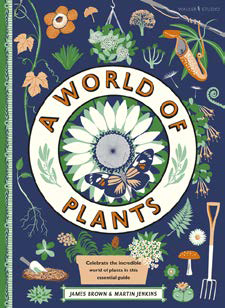
Martin Jenkins
I have been writing non-fiction (information, fact-based, call them what you will) books aimed at children, natural history mainly, for nearly 30 years now.
I have had a fair few published and usually several on the go at any one time. In that sense I do have some experience in the business. And yet when asked for a piece on the changes that I had seen in recent years, my immediate response was ‘why me?’ ‘what do I know?’. To some extent that is still the case – I generally go on doing pretty much what I have always done – but on reflection I realised I had surely picked up something along the way and that some of that might be of passing interest. We’re always told it’s best to write about what you’re familiar with. And so here it is: a brief history of my experiences in the world of book making.
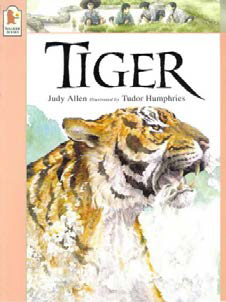
It all really happened by accident: I hadn’t particularly thought of becoming a writer, although I’d already produced a couple of books in my other life as a conservation biologist. I had just gone freelance – a relatively unusual (non-)career choice in those days and through a curious set of circumstances found myself advising Walker Books on a series of illustrated animal conservation-themed books they were producing. The pay wasn’t huge (it rarely is) but it was otherwise remarkably good fun. We would meet periodically for a mildly boozy lunch (free wine! those really were the days) and I would be quizzed about drafts and layouts. I’m still a bit hazy about what impact I actually had.
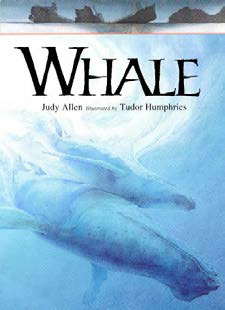
Judy – the writer – was scrupulously accurate and thorough in her research, which meant I rarely had to change a thing. Tudor, the artist, would respond to my comments: ‘isn’t that tiger a bit stretched in the middle?’, or ‘I don’t think a humpback whale can really twist its spine that way – it makes it look like the world’s biggest catfish’ with a spot of good-natured bluster, disappear back to his studio, and still never changed a thing. The elongated tiger and the twisty-spined whale are out there to this day. Somewhere too there’s a splendid picture of a herd of elephants crowded around an African waterhole, one of which has six legs (I got a lot of flak for that) (somewhere quite else, there’s also a gorilla with six fingers clutching a banana, but that’s another story).
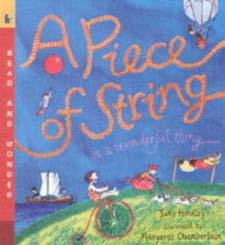
I was then asked if I could help out occasionally on a new series of books that Walker was working on. These came under the general rubric of narrative non-fiction and were, I think, remarkably innovative for the time. They were short illustrated books (always original artwork, never photos) that combined a strong narrative with two distinct strands of text: one containing the main storyline and the second – hand lettered in those days – with subsidiary information distributed through the book, intended to open out and enrich the whole reading experience. They were called Read and Wonder and their aim wasn’t just to introduce a new approach to non-fiction to young readers but also to push at the boundaries of the subject matter.
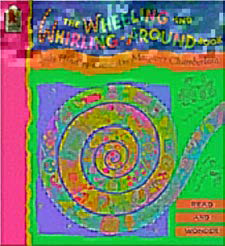
Walker was a young, thriving company that prided itself on its experimental approach to book making and was always prepared to try new approaches. So, while the main topic was natural history, there were also books on walls, rivers and pieces of string; there was even a Wheeling and Whirling-around book. Whatever their content there was a belief that the text, design and illustrations should be of the highest possible quality, so that they received the same care and attention as the picture books that were the cornerstone of the company’s reputation.
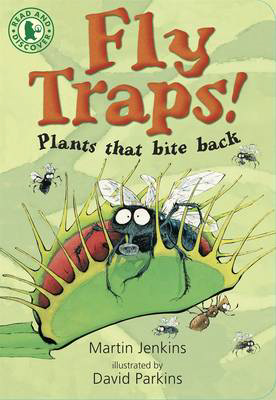
After a period of fact checking on eels and giant octopuses, I was asked by my editor if I’d ever thought of having a go at writing a children’s book. I confessed I hadn’t really but, spurred on, went off and did some thinking. A few months later I came up with a draft of what was to become my first children’s book – on carnivorous plants. It had the makings of a book, but one potentially fatal flaw – something my eagle-eyed editor spotted straight away. She was encouraged enough to give me an actual advance and send me off to revise the thing. I rewrote it, got a contract and, after a hiatus or two, the book (Flytraps! Plants that Bite Back) finally appeared in 1996.
Encouraged by the success of the Read and Wonder series and other ventures, in the mid-1990s Walker took the bold step of establishing what turned out to be a relatively short-lived dedicated non-fiction department. I was involved from the start. This is where I really began to learn about producing non-fiction. My first commission was on invertebrates. I remember blithely drafting a page on dragonflies and faxing it off (very high tech in 1995) only to receive 24 hours later a six page fax in return carefully taking apart every single paragraph I’d written. I remember going into something of a decline, deciding it was all a horrible mistake and that my future as an author was likely to be drawing rapidly to a close. Twenty-four hours and a good night’s sleep later, even worse I realised that pretty much everything my editor had written was bang too right, so I took a deep breath and rewrote the thing, much better this time.
And out of that came what is probably the main lesson I’ve learnt in all these years: to produce decent books of pretty much any ilk, and especially those aimed at young people, you really really need a good editor. Of course it’s a tricky business. Writers are a famously tricky bunch, but someone needs to tell them when they’re going wrong. Good editors are like your mother – they’re supposed to be irritating, but they should also have your best interests at heart. And perhaps nowhere more so than when facts are at stake. To do their job well they need to be a little bit obsessive, nerdy even, about getting things right and be prepared to prod away at their authors until they too are sure they’ve got it right. Time and again my editor has said ‘I still don’t quite get this’, pointing at some paragraph I’ve struggled over for days. And time and again I’ve stifled my irritation and realised I’ve been trying to do something like make fractional reserve banking comprehensible for ten-year-olds, and that if my (probably) Oxbridge-educated editor doesn’t quite get it then it’s not very likely that the ten-year-olds will.
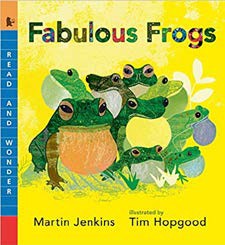
All that was over 20 years ago. The much imitated Read and Wonder books, now known as Nature Storybooks are still going strong, with many of the titles still in print. I’ve been responsible for a few of these myself, as well as a string of books on all sorts of topics, mostly biological, but also on vampires (fun), time (knotty) and money (really hard, especially the bit about fractional reserve banking), as well as a couple of adaptations of classic novels (Gulliver’s Travels (2004) and Don Quixote (2009), of which I’m particularly proud).
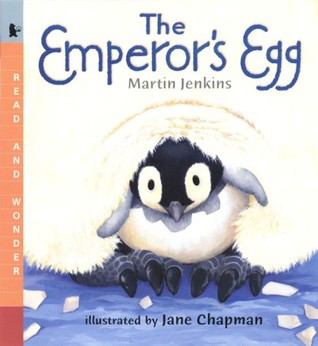
What have I learnt? That it would be pretty hard to earn a decent living doing this full time for one. Few of the books I have written with the exception of The Emperor’s Egg (1999), about penguins, could be counted as bestsellers. Even so, it can be pretty dispiriting what a low profile the books we produce often have. It’s not a sector of the book market, I think, that has traditionally been taken very seriously in this country. This is sad. Anyone who works around children, particularly younger children, knows that they are like sponges, with an insatiable appetite for information and an enviable ability to absorb reams of the stuff. It seems to me we have some kind of responsibility to nurture and feed that appetite if we possibly can. Of course there are attempts to address this: the tireless efforts of the School Library Association’s Information book awards and the Royal Society’s Young People’s book prizes, both spring to mind, but the publicity and attention they garner are as nothing compared to their generally fictional equivalents such as the Carnegie and the Kate Greenaway.
Luckily things tend to work rather better abroad, particularly in the United States, but also increasingly in Asia. In the US much more attention is focused on the non-fiction market with a far stronger reviewing tradition and a plethora of relevant honours (honors) and awards, even if these rarely have any actual prizes associated with them (though I have built up quite a nice collection of tie pins over the years). I haven’t done the actual sums recently but there’s little doubt that the bulk of my earnings from royalties come from overseas publications or foreign rights. Nevertheless, without having maintained a parallel life as a conservation biologist, I think I would have had quite a glum time of it.
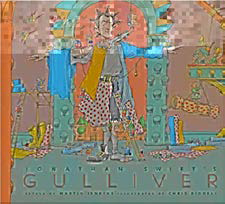
There are signs that this is changing. The past few years have seen a real upsurge in non-fiction publishing in the UK aimed at young readers, much of it with some kind of environmental bent. Indeed just as I was finishing this, a little late as usual, an article appeared in The Guardian by Patrick Barkham (‘Tears at Bedtime: Are Children’s Books Causing Climate Anxiety?’) (2020), drawing attention to the recent boom in environmental publishing aimed at children, much of it apparently inspired by Greta Thunberg and citing data from Nielsen Book Research to the effect that publications and sales of new children’s books about wildlife and the climate crisis have more than doubled over the past year. Many of these books are beautifully produced – design is something that has moved on a lot in the past 20 years. Often though, they strike me as having one besetting problem, and that is in the quality of the writing. Time and again I’ve opened beautiful-looking books to find myself wading through leaden paragraphs of half-dead prose, as often as not bearing the imprint of some specialist in the field who has clearly done their best but has little idea of how to structure something in a lively and engaging way or how to pitch it at younger non-technical readers. Of course this is something we can all be guilty of (I’ve done it myself many times) and one must be careful not to rush to judgement, but there’s little doubt it’s a real issue in non-fiction generally and not just in that aimed at children.
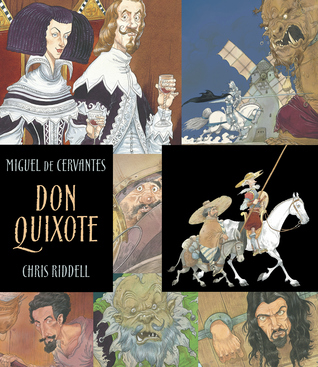
In fairness I think we can overestimate the sensitivity of young readers to the quality of the prose they encounter (there’s quite a successful series of books on wizards that are a good testament to that). But in the final event the words are all we have. And of course they matter – hugely. We do readers (and what else is it ultimately that they’re reading?) a huge disservice if we neglect them. Surely we have some sort of responsibility to do the best we can by them, even at the expense of endless rewrites and the not-so-occasional sense-of-humour failure (that fractional reserve banking again). The other point that Barkham raised in his article is trickier to answer. For years I wrestled with just this. When asked why I hadn’t written anything that dealt with the other half of my professional life, I always explained that I didn’t want to burden young people with problems over which they had no control or make them feel guilty for a state of affairs they had played no part in creating. Or perhaps I was just thinking up excuses, When I was finally persuaded into writing, I strove to produce something that presented the issues as clearly as possible without simultaneously offering a counsel of despair. The resulting book (Can We Save the Tiger? (2010)), beautifully illustrated by Vicky White, bought golden opinions of all sorts of people (though still didn’t become a bestseller) and can serve, I like to think, as an example of what can be done.
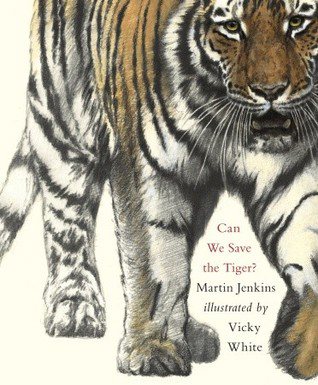
All that was nearly ten years ago. I’m less sanguine now than I was then. The world has moved on and, I think most people would agree, not in a good way. It’s hard for any remotely savvy young person to remain unaware that something is up. The inescapable truth is that us oldies have royally messed things up and if anyone is going to put it right it’s their generation. Frankly I don’t envy them the task. Everything is a lot more complicated now. Anyone trying to make sense of anything has to negotiate a minefield of facts, half-facts and outright lies; they need all the help they can get. Which all means that we have more responsibility now than ever to go on being as honest as we can and putting as much care into making books as we can.
Works cited
Allen, Judy (illus. Tudor Humphries (1993) Whale. London: Walker Books.
Allen, Judy (illus. Tudor Humphries) (c. 1998) Tiger. London: Walker Books. (Published unillustrated 1992.)
Barkham, Patrick (2020) Tears at Bedtime: Are Children’s Books Causing Climate Anxiety?. The Guardian 27 February 2020.
https://www.theguardian.com/books/2020/feb/27/tears-at-bedtime-greta-thunberg-effect-behind-boom-in-childrens-climate-crisis-books.
Hindley, Judy (illus. Margaret Chamberlain) (2010) A Piece of String is a Wonderful Thing (Read and Wonder). London: Walker Books. (Published unillustrated 1993.)
Hindley, Judy (illus. Margaret Chamberlain) (1993) The Wheeling and Whirling- Around Book (Read and Wonder). London: Walker Books.
Jenkins, Martin (illus. David Parkins) (1996) Flytraps! Plants that Bite Back (Read and Wonder). London: Walker Books.
Jenkins, Martin (illus. Jane Chapman) (1999) The Emperor’s Egg (Read and Wonder). London: Walker Books.
Jenkins, Martin (adapter) (illus. Chris Riddell) (2004) Jonathan Swift’s Gulliver (Walker Illustrated Classics). London: Walker Books.
Jenkins, Martin (adapter) (illus. Chris Riddell) (2009) Miguel de Cervantes’ Don Quixote. London: Walker Books.
Jenkins, Martin (illus. Vicky White) (2010) Can We Save the Tiger?. Somerville, MA: Candlewick Press.
Jenkins, Martin (illus. Tim Hopgood) (2016) Fabulous Frogs (Read & Wonder). Somerville, MA: Candlewick Press.
Jenkins, Martin (illus. James Brown) (2019) A World of Plants. London: Walker Studio.
Martin Jenkins originally studied zoology. Between 1980 and 1990 he worked for the International Union for Conservation of Nature (IUCN) as a conservation biologist. Since then he has been a freelance consultant, specialising in biodiversity and wildlife trade. He has also written numerous books for children, almost all published by Walker Books. His most recent publication, with James Brown, is A World of Plants (2019). He lives in Cambridge and London.
